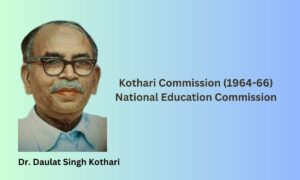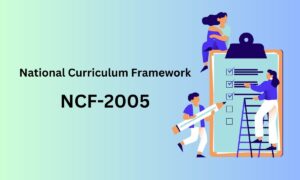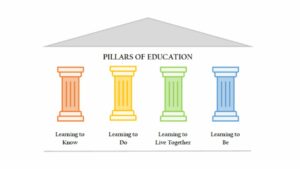The national policy of Education 1986 or NPE 1986 brings major changes in the education system. There was a rapid expansion of education and also the country was rocked by the explosion in population. The rise in educated and uneducated unemployment was shattering the tranquil waters of the country.
Education was not helping in the removal of defects. Besides, it was lagging behind in many aspects of the changes going on in the world education scene. The world was in the grip of the technological, scientific, and computer revolution.
At this time, the country had a very young dynamic, charismatic, and forward-looking leader sir Rajiv Gandhi as the PM of India. He wanted to take India to great heights of scientific and technological progress
Role of Education NPE
In the beginning, the NPE lays down the essence and role of education as follows:
- Education for all in our national perspective. It is fundamental to material and spiritual development.
- Education has an important role and it refines sensitivities and perceptions.
- Education develops manpower for different levels of economy
- Education is a unique investment
The major recommendation of NPE 1986 (National Policy of Education 1986)
1. Based on the constitutional principles
It derives its inspiration from the idea and values of democracy, and secularism enshrined in our constitution.
2. Access to Education
The concept of a National system of education implies that all students irrespective of caste, creed, location, or Gender have access to education of comparable quality. To achieve this government introduced funded programmers. Effective measures were taken in the direction of the common school, system.
3. Common Education Structure
It envisages a common educational structure, the 10+2+3 that has been accepted in all parts of the country. Regarding the further break-up of the 1st 10 years, efforts will be made to move towards the elementary system comprising 5 years of primary and 3 years of Upper Primary, and 2 years of high school education.
4. National Curriculum framework with a common core
Education will be based on a national curriculum framework that contains a common core, along with other components that are flexible. The common core will include the history of India’s freedom movement, the constitutional obligations, and other contents, which are important to nurturing National identity
5. More emphasis on Learning
The teacher should create an environment in the class and in the school in general where the students learn many things through their own creativity.
6. Vocationalization of Education
The rationalization of education was given importance in this new education policy. Vocational courses of various types should minimize the unemployment problem because the educated person will be able to use the required skills for earning his livelihood.
7. Important of Moral Values
Education is an important factor in bringing in about desirable changes in society. Therefore the importance of moral values should be inculcated in the students
8. Emphasis on reforms in the examination system
This policy has suggested grades should be given in place of division to avoid frustration and anxiety in students. Periodical tests have been recommended in this new policy. The teacher should be solely responsible for evaluating the merits of his/her students.
9. Education for the weaker section of society
Education of SC/ST/differently-abled persons and girls has been emphasized in the interest of National progress, and their development was considered necessary. Hence, reservation for such a person was allotted in various types of educational institutions.
10. Ever continual primary school
According to the new educational policy each primary school will have at least two classrooms with at least two teachers of these two teachers, one will be a woman. Each primary school will function throughout the 12 months of the year.
11. Operational blackboard
In this new policy, the term ‘Operational Blackboard’ has been used for conveying the idea that minimum facilities will be provided to the primary school. For eg. 2 rooms, chart, maps, a blackboard, carpet, etc. In the operation blackboard, the cooperation of voluntary organizations and local bodies will be included.
12. All India Educational Service
In order to improve the educational administration, this policy has emphasized the necessity of starting and all India Education Service Organization officers may be transferred anywhere in the country. It has been felt that this kind of transfer will weaken the undesirable bond of regionalism and will bring dynamism to the educational administration.
13. Establishing many Navodaya Schools
In these schools, students will be admitted to class VI based on the admission test. During the admission process, the ratio between the boys and girls, urban and rural students will be taken into consideration. It is a free residential school 25% of the students who have passed class VIII standards from these schools will be transferred for education to other states with a view to promoting national integration.
14. New Educational Institution
District Institute of Education Training (DIET) and District Board Education (DBE). Members of these institutes will survey the educational needs of the area and inform the concerned education officers about the same from time to time.
15. Modernization of Education
Computer education will be employed in the expansion of literacy, the utility of correspondence courses, television, radio, and satellite, video assessed videos concerning, were accepted in the development of education.
16. Education on women’s equality
Education will be used as an agent of basic changes in the status of women. It will foster the development of new values through residential curricula textbooks, the training, and orientation of teachers, decision-makers, and administrators, and the active involvement of the educational investigation. The removal of women’s illiteracy will receive priority through the provision of special support services. Major emphasis will be laid on women’s participation in vocational-technical and professional education at different levels.
In conclusion, we can state that NPE 1986 gave its considered recommendations almost on every aspect of our education with a plan of action to translate the suggestion into actions. The recommendations have been made to put into action the educational programmers of plans suggested therein.
Programme of Action (POA)-1992
- In May 1990, a committee was set up under the chairmanship of Acharya Rammurti to review the existing National Policy of Education (NPE)-1986 and make recommendations for its modifications.
- In July 1991, CABE (Central Advisory Board of Education) was set up under the chairmanship of N.Janardan Reddy, Chief Minister of Andhra Pradesh
- Based on the Reports of Rammurti and Janardan Reddy, the Govt. of India’s Chances in the NPE-1986, which is known as the Revised National Policy of Education 1986 (PoA-1992)
- on 7th May 1992, the final report was placed in Both the Parliament Houses
Modification of NPE-1986 (POA-1992)
- The educational structure 10+2+3 has been accepted across the country. Earlier 12th Class was studied in College. After Modification, it suggested that Class 12th be a part of the School. In the present day, it’s available in both Schools and Colleges. You can study 12th class either in Higher Secondary Schools or Colleges.
- More emphasis is given to the overall literacy campaign. It covers school children as well as adults.
- National Literacy mission to be linked with poverty prevention
- Educational institutions of national importance will be strengthened. Such as UGC, NCTE, AICTE etc
- Emphasis on Vocational and Skilled Training Program. Those students who are unable to pursue higher education can earn their livelihood.
- The operational Blackboard programme should be extended to Upper Primary Level. At least 3 classrooms and 3 teachers and basic teaching learning materials like charts, Aids etc
- Target of this policy by 1995, 10% of the total students are getting secondary education and by 2000, 25% of the students should get vocational education.
- More Navodaya Vidyalaya should be set up across the country. The Navodaya School are largely intended to cater the rural talented children (75% of seats are reserved with reservation for SC and ST )
- In the revised policy, an Autonomous commission should be appointed for rapid progress and improvement in Higher Education
- In future 50% of Primary School teachers should be appointed to Women
- To achieve the goal of Free and Compulsory education till 2000, a National Mission will be established
- Secondary education for SC, ST, Weaker classes and Girls
- National Evaluation Association for Examination reforms
- It is stated that more than 6% of the National Income is declared to be spent on Education



